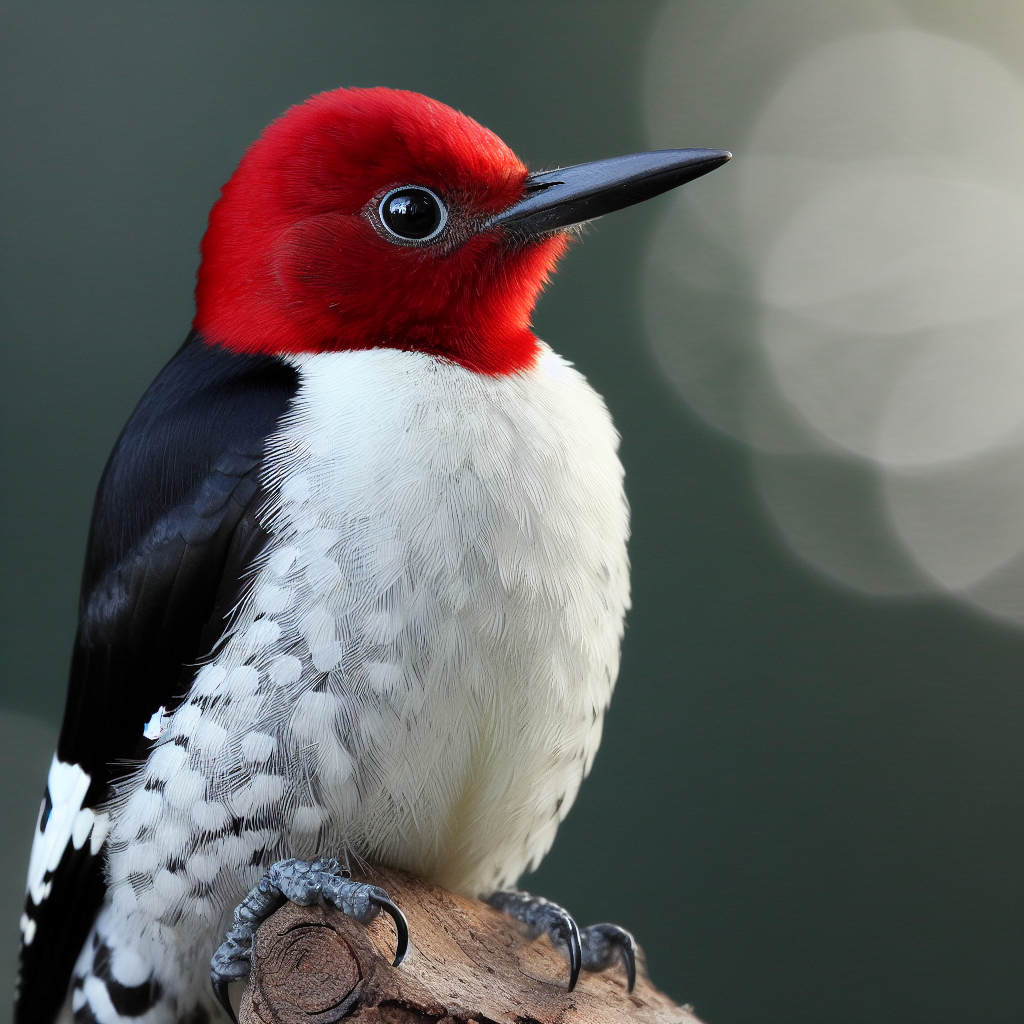Most beautiful small birds - Sykalo Eugen 2024
Red-headed Woodpecker (Melanerpes erythrocephalus)
Identification:
- Species name: Red-headed Woodpecker
- Scientific name: Melanerpes erythrocephalus
- Family: Picidae (Woodpeckers)
- Order: Piciformes (Woodpeckers)
- Subclass: Neornithes (Modern birds)
- Class: Aves (Birds)
Description:
- Size: Medium-sized woodpecker, about 20-23 cm (7.9-9 in) long with a wingspan of 36-43 cm (14.2-17 in).
- Body shape: Robust and compact, with a long, thick neck, a powerful chisel-like beak, and a stiff, pointed tail that provides support when drumming.
- Plumage color:
Adults: Vibrant crimson head, neck, and upper breast, contrasting with their black back and wings and white underparts.
Immatures: Duller overall than adults, with brownish-red heads and more streaking on the underparts.
Long, powerful beak, black and slightly downcurved.
Strong, gray legs.
Dark brown eyes.
Behavior:
- Method of feeding: Primarily excavates insects and larvae from decaying trees and woodpiles, leaving large rectangular holes. Also eats fruits, nuts, and sap.
- Reproduction: Excavates cavities in dead trees for nesting. Lays 4-6 glossy white eggs. Both parents care for the young.
- Movement: Resident in most of its range, with some individuals dispersing locally.
- Communication: Loud, drumming calls, often described as a rapid series of rolling beats. Also uses a variety of calls for alarm and communication.
Ecology:
- Habitat: Open woodlands, parks, and agricultural areas with mature trees. Prefers stands with dead or decaying wood.
- Diet: Insects, larvae, fruits, nuts, sap, and seeds.
- Hunting methods: Uses its powerful beak to excavate decaying wood, revealing insects and larvae hidden beneath. May also glean insects from leaves and branches or chisel holes in fruits and sapwood.
Distribution: Found in eastern North America, from southern Canada to the Gulf of Mexico and west to the Great Plains.

The Red-headed Woodpecker, a feathered drummer painting the North American forests with splashes of crimson and ivory! This resident of open woodlands might seem like a noisy neighbor at first glance. But beneath its fiery head and insistent drumming lies a treasure trove of surprising facts and adaptations that will transform this forest percussionist into a captivating avian acrobat, hidden feast master, and unexpected social swinger in your eyes.
Masters of the Treetop Ballet: Forget clumsy hops; Red-headed Woodpeckers reign supreme in the domain of towering oaks and sun-dappled branches. Their powerful legs and surprisingly broad wings propel them through the canopy with breathtaking agility, leaping and gliding between trunks like feathered trapeze artists on miniature pogo sticks. Imagine them as arboreal parkour experts with built-in miniature hang gliders and an innate love for high-wire performances.
Hidden Feasting Technique: Don't underestimate their dietary flexibility! While carpenter ants are a staple, Red-headed Woodpeckers are opportunistic omnivores, readily adapting their menu to seasonal bounty. From juicy fruits and tender grubs to berries and even the occasional small snake, their varied appetite keeps them fueled for energetic foraging sessions. Think of them as feathered gourmands with built-in miniature buffets hidden within the treetop maze.
Drumming with Resonant Spirit: Their drumming isn't just noise. Red-headed Woodpeckers possess a rich and communicative repertoire of drumming patterns, each with a specific meaning. From territorial declarations to food calls, their rhythmic pulses echo through the woods like feathered drummers, sending messages and melodies through the vibrant green symphony.
Unexpected Social Swingers: They're not always solitary drummers. During foraging seasons, Red-headed Woodpeckers form surprisingly large and boisterous flocks, flitting through the trees in playful flurries, their crimson flashes lighting up the undergrowth. They even participate in synchronized aerial dives, painting the sky with fleeting patterns of black and white. Imagine them as feathered skydivers with built-in miniature wingsuits and coordinated tumbling routines.
Champions of Ecosystem Health: They're not just noisy residents. Red-headed Woodpeckers play a vital role in the health of North American forests. Their excavation creates nesting spots and homes for other species, while their insect foraging controls pest populations, making them feathered forest doctors with built-in miniature excavators and an innate pest-control system.
Cultural Charmers: In North American cultures, the Red-headed Woodpecker is associated with energy, resilience, and the vibrant spirit of the open woodlands. Its fiery plumage and insistent drumming inspire awe and respect, making it a treasured symbol of the region's enduring landscapes and the boundless energy of life.
Unexpected Regional Variations: Did you know? Not all Red-headed Woodpeckers are the same! Different populations across North America boast subtle variations in plumage color and drumming patterns, adding a touch of feathered diversity to this adaptable species.